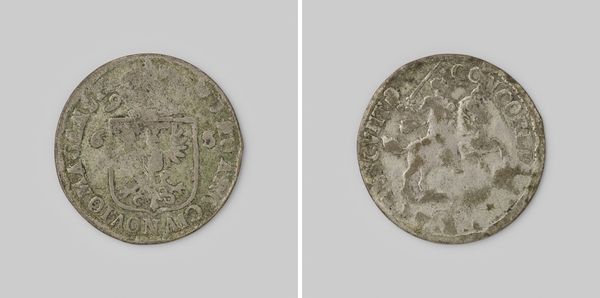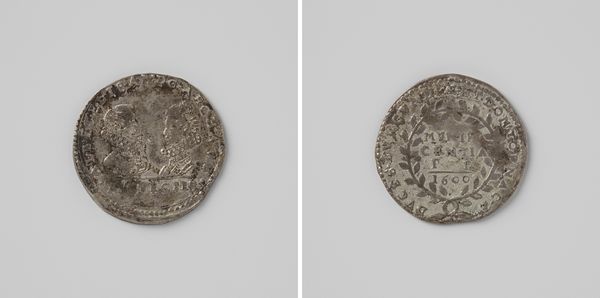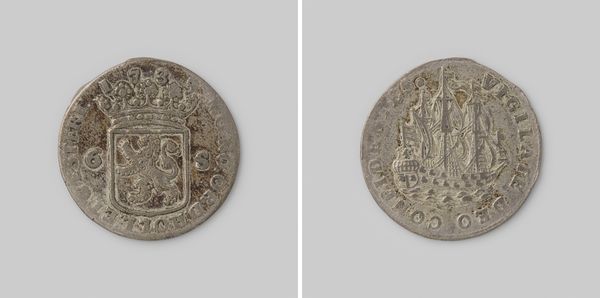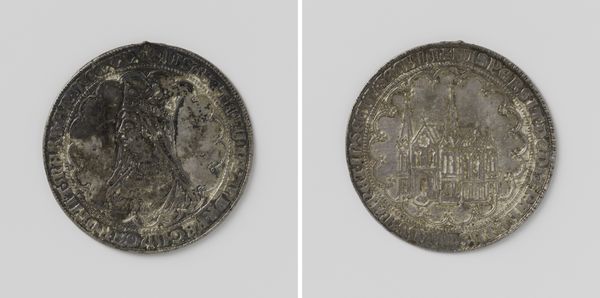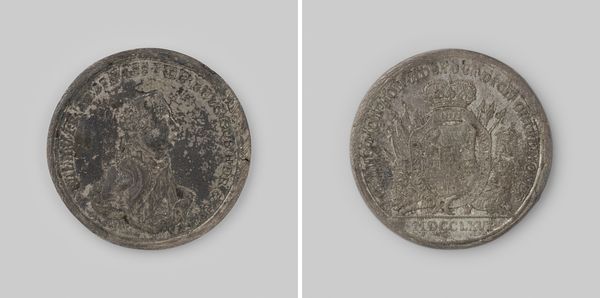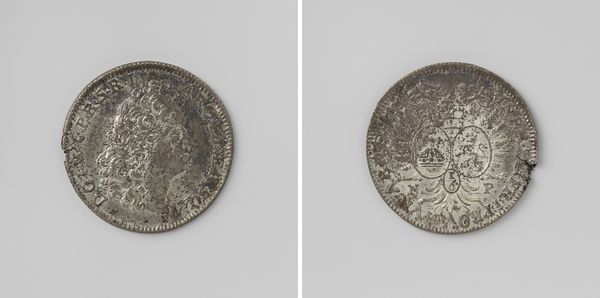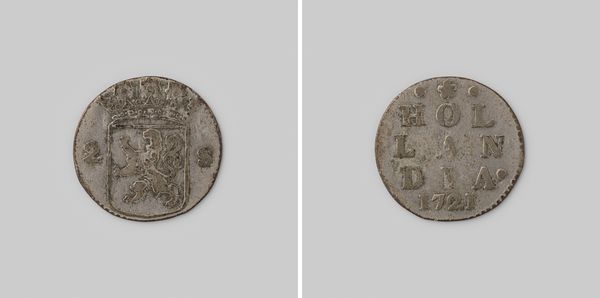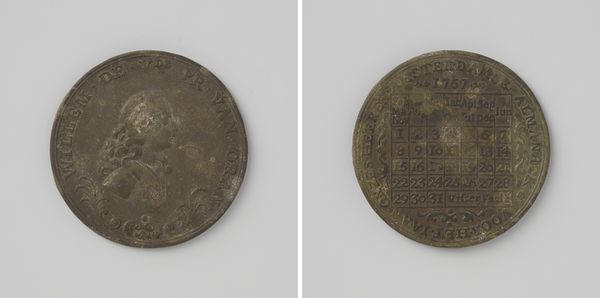
print, metal
#
portrait
#
medieval
# print
#
metal
Dimensions: diameter 2.5 cm, weight 4.51 gr
Copyright: Rijks Museum: Open Domain
Curator: Ah, this intriguing artifact before us is titled “Cornelius van Bommel, bisschop van Luik,” dating back to 1843. It appears to be a print, potentially on metal. Editor: Well, immediately, I notice how the piece uses texture, perhaps as a way to establish its authority. The relief really pops. Given it’s a portrait of a bishop, there’s an expectation of portraying power. The medievalist impulse suggests that it wants to claim and reflect an older order, doesn't it? Curator: It certainly resonates with symbols of authority! Van Bommel was, in fact, the Bishop of Liège, and the heraldry dominates the composition, speaking volumes about lineage, privilege, and the established Church hierarchy during the medieval era. The lion rampant feels deliberately iconic and powerful. It evokes a cultural memory of strength and history, of both the medieval era, and the cultural revival occurring around this time period. Editor: And the inscription itself, almost encircling the piece, functions as a frame of power. It demands our attention. The symbols used—the lion and crown motifs—do more than identify; they assert dominance within a broader societal structure. The imagery deliberately speaks to class divisions and structures. Even the artistic style, consciously evoking an older era, reinforces conservative ideals of the day. It's really interesting. I wonder what a closer look would reveal? Curator: Precisely! The deliberate roughness you noticed reinforces an idealized historical narrative. Each symbol carefully chosen creates an icon—Bishop van Bommel elevated, connected to an unbroken, almost divinely ordained lineage. One wonders how a nineteenth century image-maker used materials and techniques to imbue him with a sense of the ancient past. Editor: Well, it certainly complicates simple ideas of historical representation, doesn’t it? It's so fascinating how something this compact manages to contain so much social and cultural information! Curator: Indeed. Studying art like this makes you consider what’s gained, but also what stories are suppressed through deliberate choices of iconography. The potency and manipulation within visual symbols has a way of holding up over time. Editor: I agree. When looking at historical objects we have to keep thinking of how those decisions impact marginalized and unheard people, as well. It's like peeling away the layers of what is said versus what is not.
Comments
No comments
Be the first to comment and join the conversation on the ultimate creative platform.
